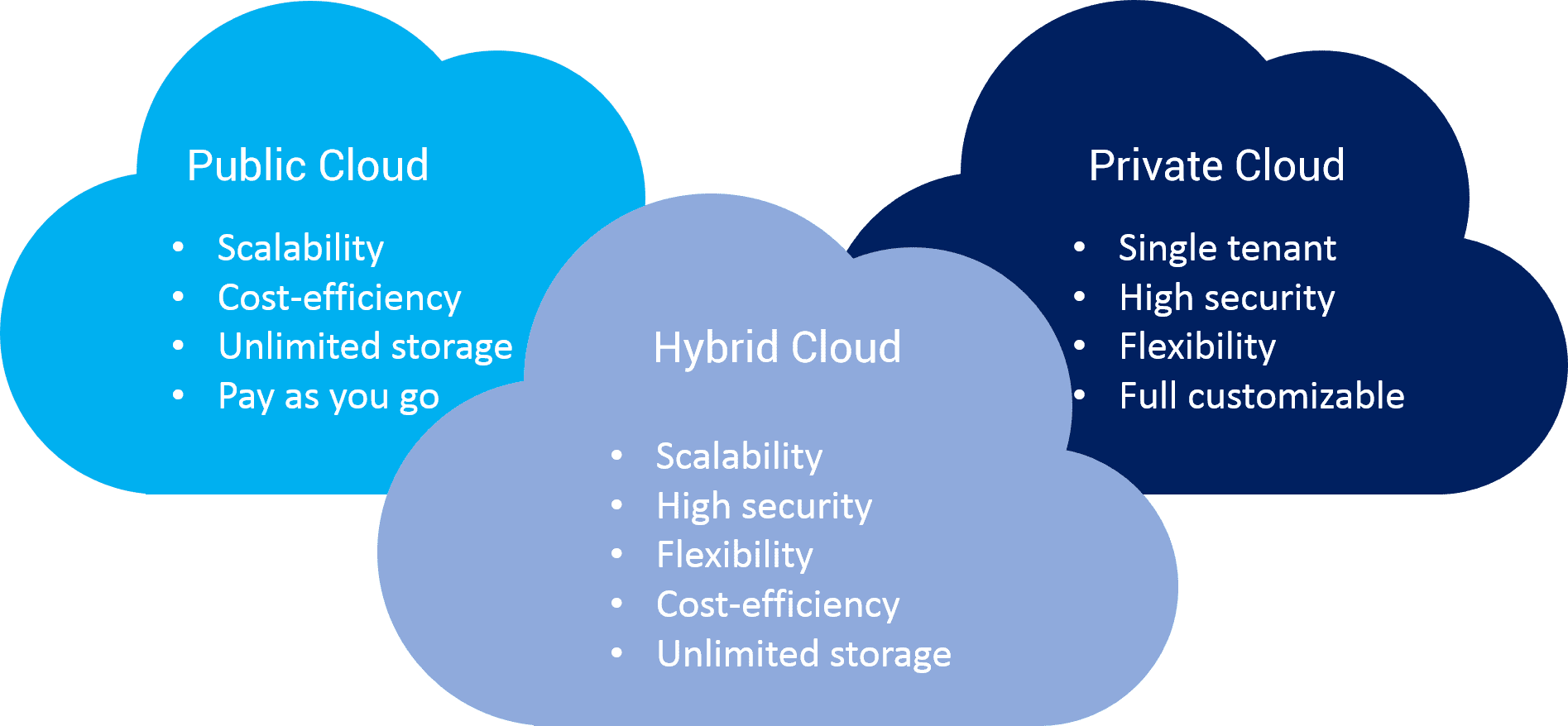Before talking about hybrid cloud, let’s quickly recap on what public cloud and private cloud are.
Public cloud is a shared infrastructure that allows you to scale up and scale down computing power as needed to reduce costs;
private cloud is an isolated infrastructure behind an organization’s firewall, which gives you more control over physical resources but at a higher cost. Is there a solution that combines the benefits of each cloud computing environment? The answer is yes – this combination is called a
hybrid cloud environment.
Hybrid cloud is a
cloud computing model that combines one or more public cloud and private cloud environments through a network connection, which allows for
sharing of data and applications between the different cloud environments.
A hybrid cloud environment allows enterprises to distribute workloads across different cloud environments according to business needs. For example, a company can run core services in a private cloud environment to have better control and customize the environment to meet their needs. When the workload exceeds the limits of the available resources, the additional work can be transferred automatically to the public cloud environment. This approach provides extra capacity to services on demand, a method commonly known as "cloud bursting". As the extra demands will be run on the public cloud, there are virtually no limits to storage, compute, and all other capacities.
There are two main methods to connect public cloud and private cloud: VPN and Express Connect (point-to-point dedicated connection).
Hybrid cloud lets you experience the benefits of both private and public clouds. It provides high scalability, virtually unlimited storage space, flexible payment models, and is cost effective, just like public cloud. Hybrid cloud is also highly secure; it gives you more flexibility and control over cloud resources such as those in a private cloud.















